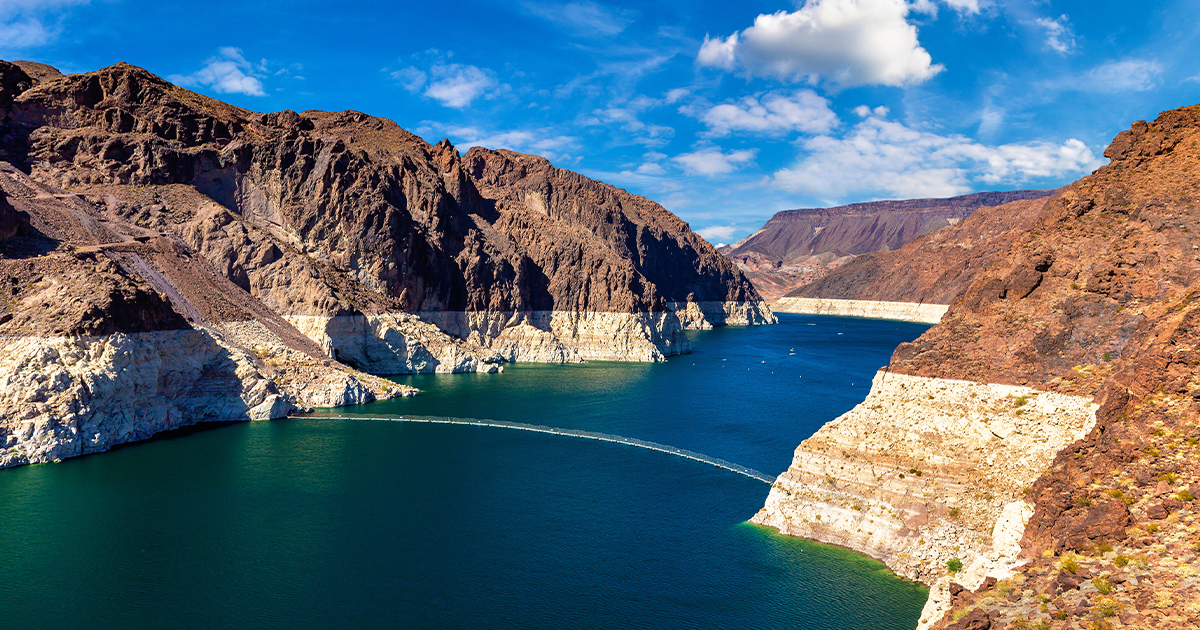The Ripple Effect: The Hidden Value of Industrial Water Conservation

23
Oct 24
The Ripple Effect: The Hidden Value of Industrial Water Conservation
Welcome to another Water Use Wednesday! Today, we're diving into a critical issue that's making waves in the United States industrial sector: water conservation. As droughts intensify in states like California and Nevada, companies have quite literally been feeling the heat – turning water management from a background concern into a front-and-center crisis. Some have had to dial back operations, watching their production and revenue dry up along with their water sources. It's a stark reminder that water isn't just a resource – it's the lifeblood of our industrial systems.

Riptide: Impacts Below the Surface
When we talk about industrial water use, we're not just discussing what comes out of the tap. There's a whole ecosystem of costs and impacts:
The water-energy-nexus is the delicate balance between water usage and energy consumption. From pumping and heating to treating and disposing, water management demands significant energy, and as most of our energy in the Unites States is still produced through carbon intensive processes, the impacts of conservation can be exponential. By embracing conservation, industries don't just save water, they save energy. It's a two-for-one deal that can protect our precious water resources, eliminate harmful carbon emissions, and reduce costs.
But the financial implications don't stop at the energy meter. Water itself comes at a price, and it's more than just the number on the utility bill. Companies invest heavily in water procurement, usage, disposal, and treatment. Factor in the looming threat of fines for excessive use, and suddenly, water conservation transforms from a simple cost-cutting measure into a savvy financial strategy.
Nature is also keeping a tally. The environmental cost of our water-hungry ways is steep and climbing. Underground aquifers, the hidden reservoirs beneath our feet, are being drained at an alarming rate, unable to replenish fast enough to meet our demands. Above ground, the story is just as concerning. Once-mighty lakes and rivers are shrinking before our eyes, a visible testament to the impact of our water use. It's nature's invoice, and it's one we can't afford to ignore.
A Tale of Two Lakes: The Colorado River's Dwindling Giants
Lake Powell and Lake Mead, the two largest reservoirs in the United States, serve as stark reminders of our water crisis. These Colorado River giants, vital for water supply and hydroelectric power across seven states, have seen alarming declines over four decades. Since 2000, Lake Mead's water level has dropped by more than 170 feet, reaching just 27% of its capacity in 2022. Lake Powell fared no better, dipping to 23% capacity the same year.
Climate change, reduced snowpack, and increasing demand have all contributed to this decline. The visual impact is striking: a white "bathtub ring" encircles Lake Mead, while once-submerged rock formations have resurfaced in Lake Powell. These changes threaten power generation and water supply, prompting the first-ever water shortage declaration on the Colorado River in 2021.
While recent wet winters have offered temporary relief, experts warn that long-term solutions are crucial. These dwindling lakes underscore the urgent need for sustainable water management across all sectors, including industry.

Creating Waves: Water Conservation Made Easy
So, what can water-intensive industries do to turn the tide? Several strategies are making a splash in the world of industrial water conservation. Many companies are embracing water reclamation, giving each drop multiple lives before it leaves the facility. Technologies like reverse osmosis – discussed in our last post – are turning wastewater into a valuable resource, reducing the need for freshwater intake and minimizing environmental impact.
Efficiency is another key player in the conservation game. From low-flow fixtures to precision spray nozzles, water-efficient equipment can dramatically reduce water intake without compromising production. These technological advancements are proving that sustainability and productivity can go hand in hand.
But the benefits of water conservation extend beyond the factory floor. Companies leading the charge in water conservation often find themselves awash in positive public sentiment. This ripple effect of good public relations can lead to increased government support, customer loyalty, and even competitive advantage in an increasingly eco-conscious market.
Surfing USA: Riding the Waves of Change
Water conservation isn't just an environmental imperative – it's a smart business move. By implementing water-saving strategies, companies can cut costs on water and energy, boost their environmental credentials, and stay ahead of increasingly stringent regulations. Moreover, they can attract eco-conscious customers and investors, ensuring long-term operational sustainability in a world where water scarcity is becoming the norm rather than the exception.
From conducting comprehensive water assessments to training employees on conservation practices, there are countless ways for industries to get started. Each effort, no matter how small, contributes to a more sustainable future for both business and the environment.
As we face an increasingly water-stressed world, the industrial sector has a unique opportunity to lead by example. By embracing water conservation today, we're not just saving drops – we're creating ripples of change that will benefit generations to come. These efforts can drive innovation, reduce operational costs, and position companies at the forefront of sustainable business practices.
Remember, in the world of water conservation, every drop counts. So, let's make waves and create a sustainable future, one drop at a time!

